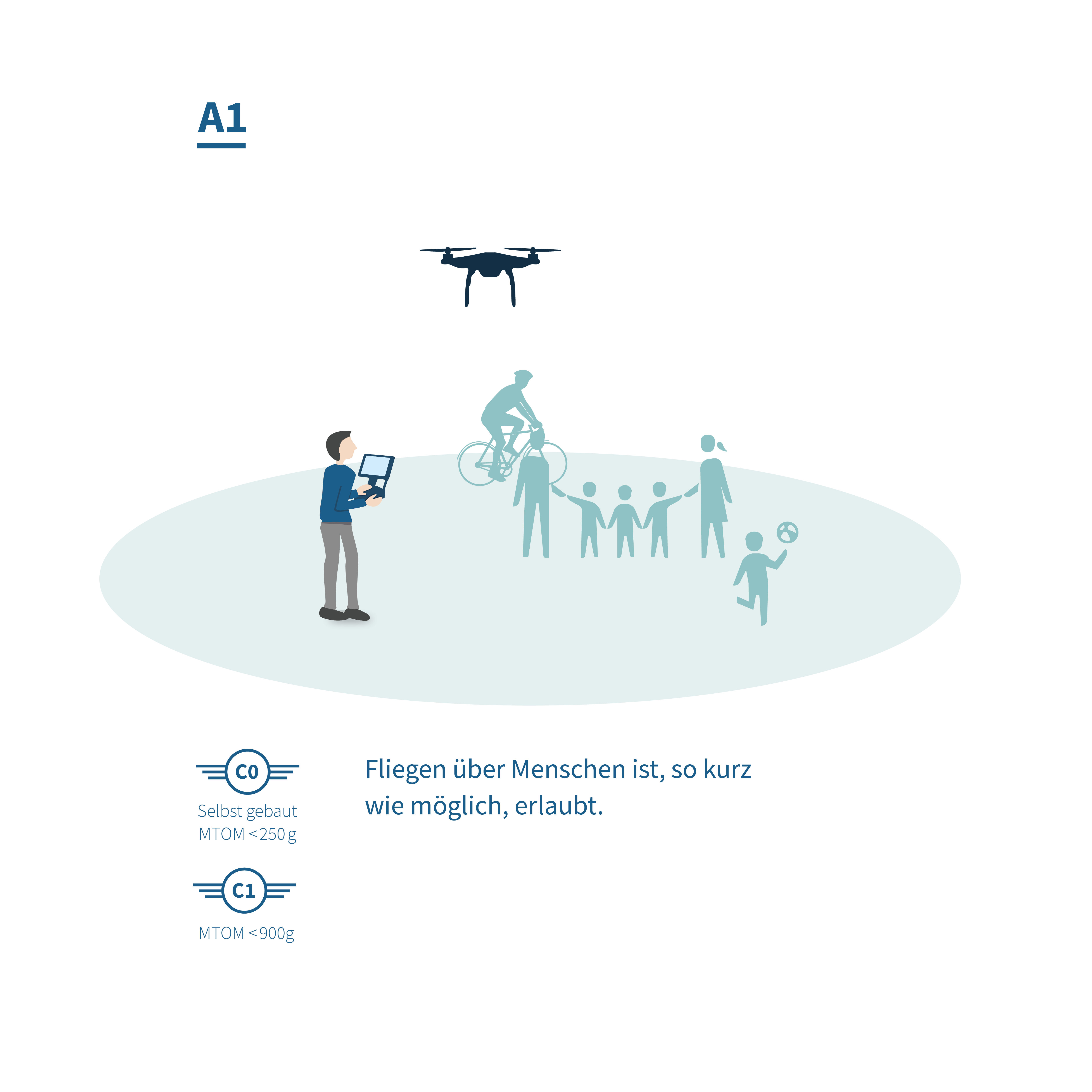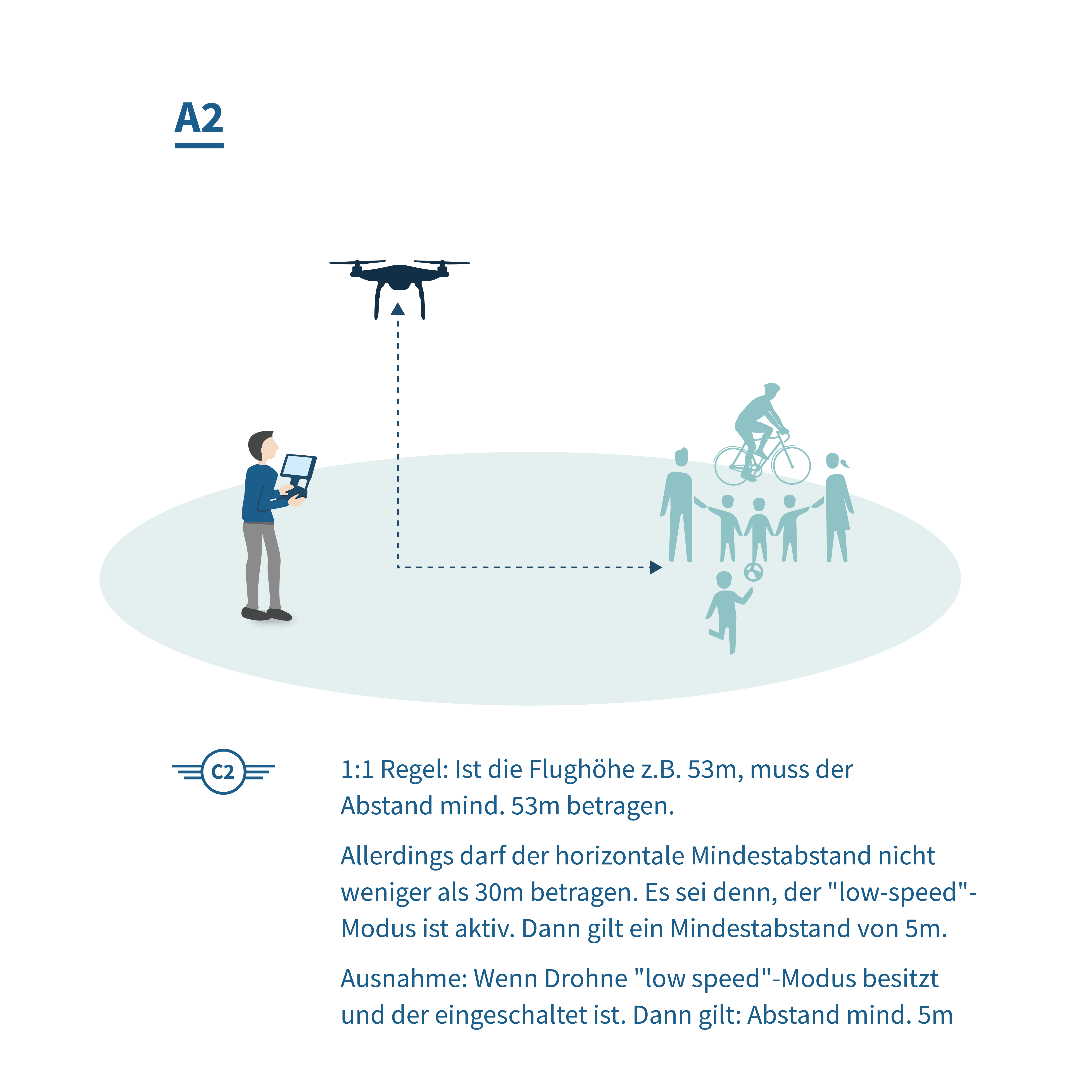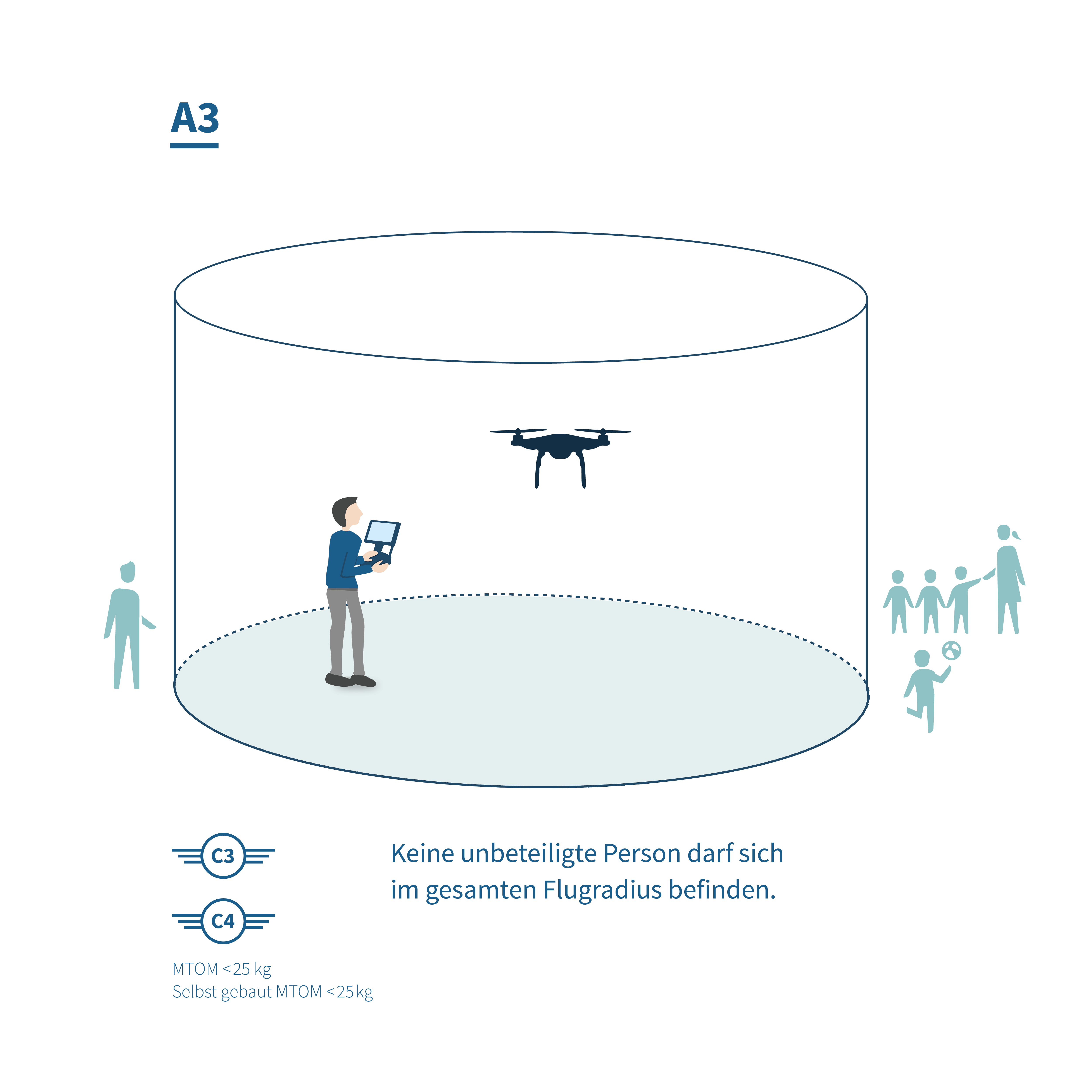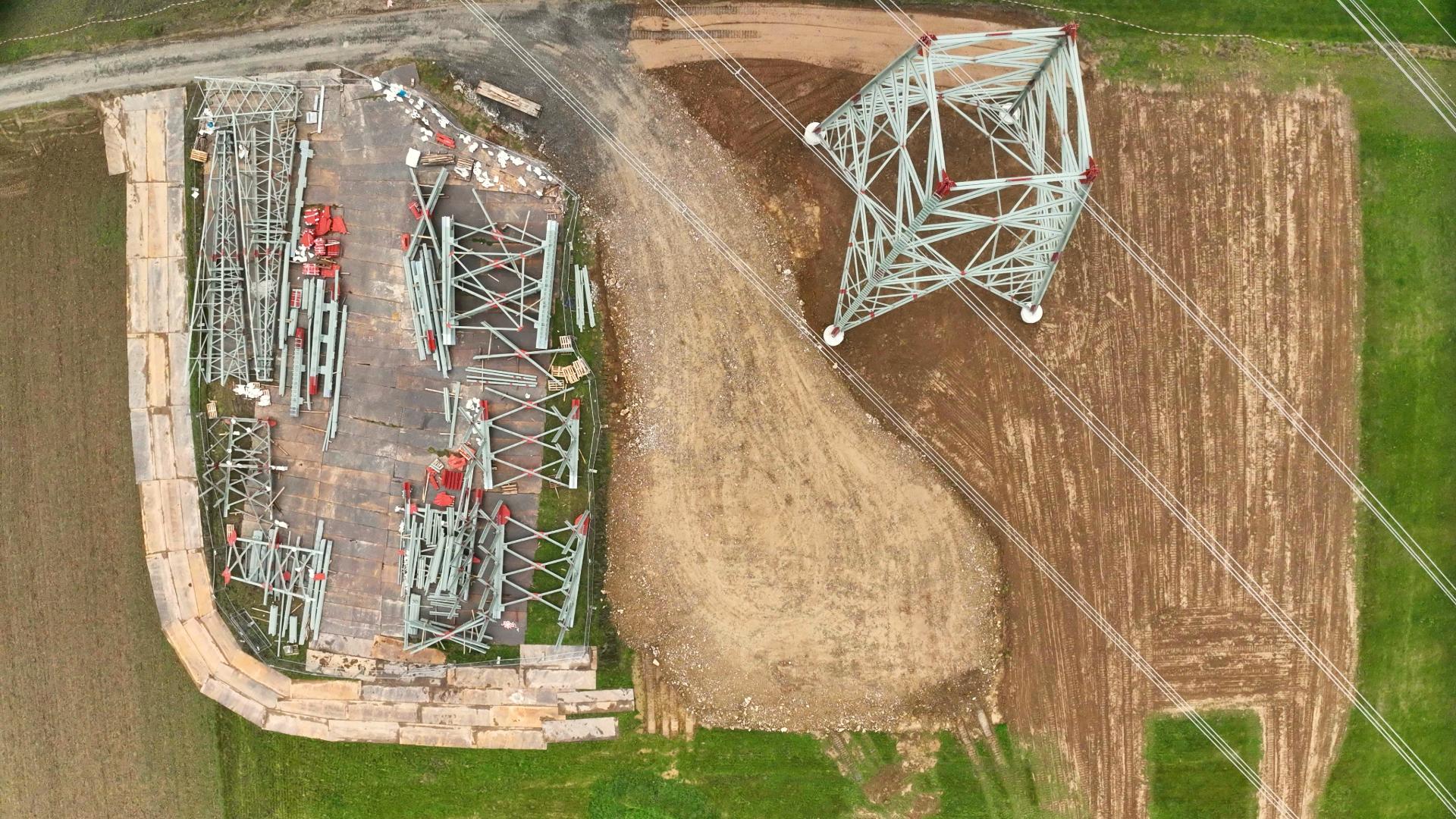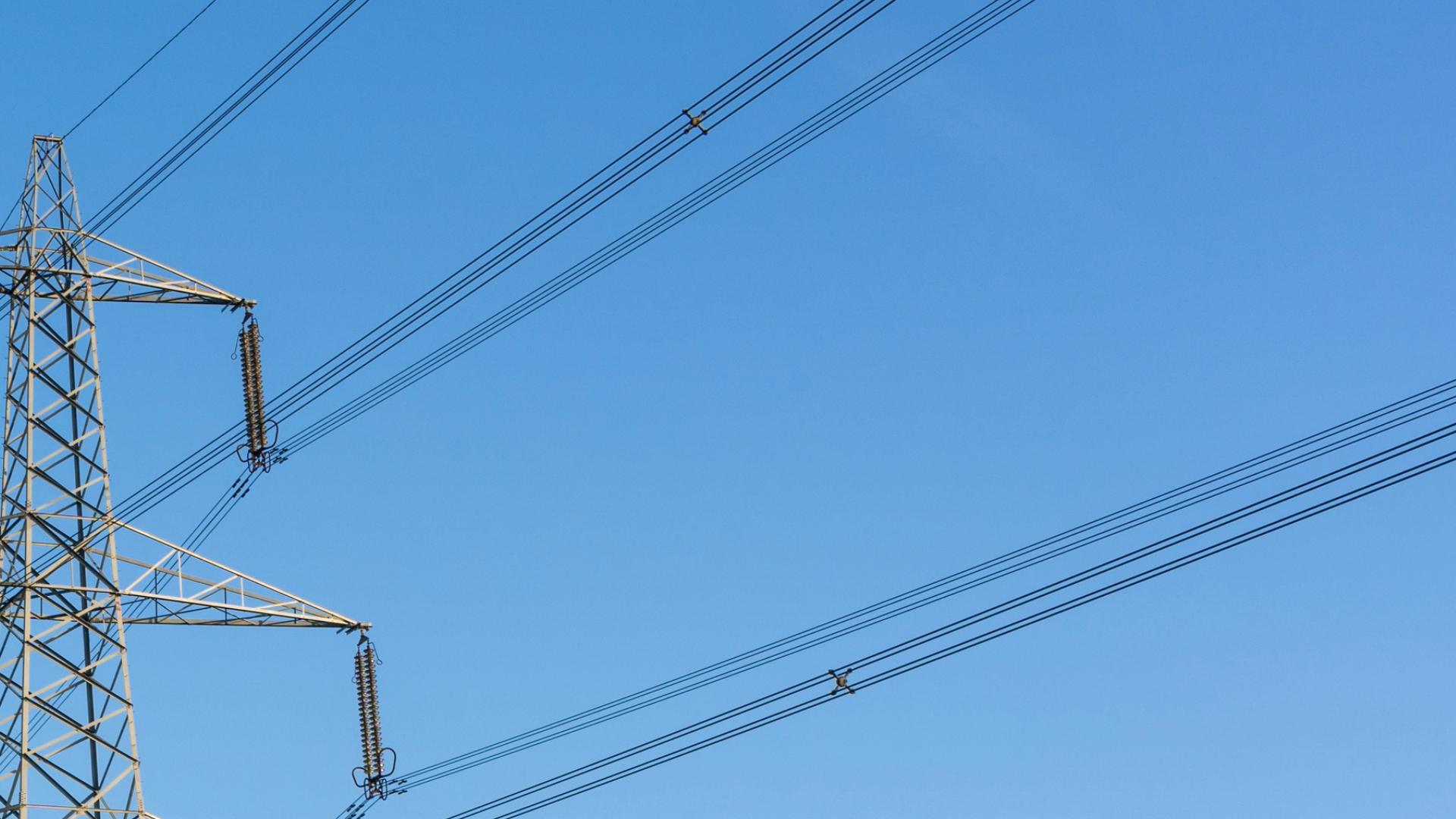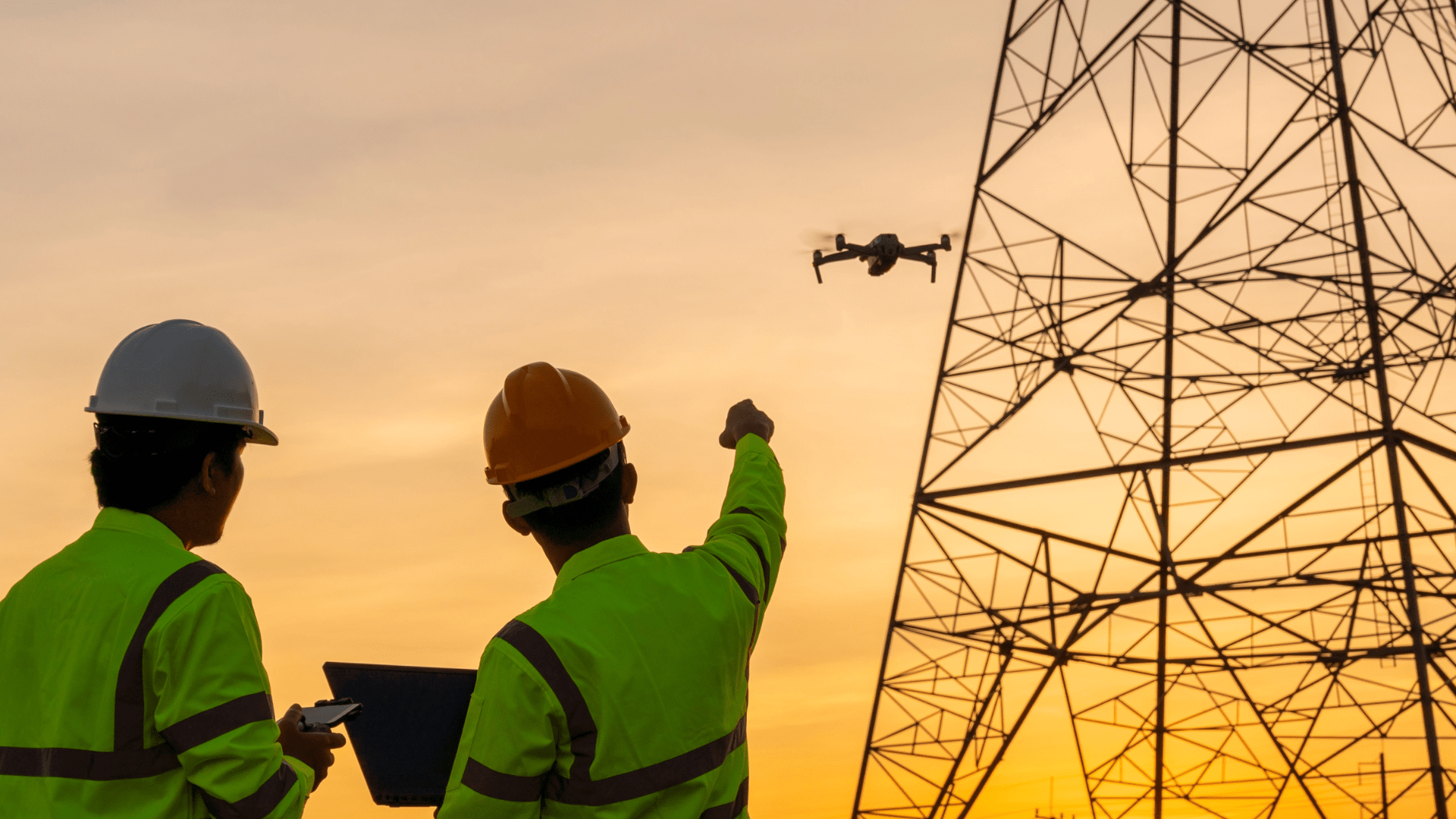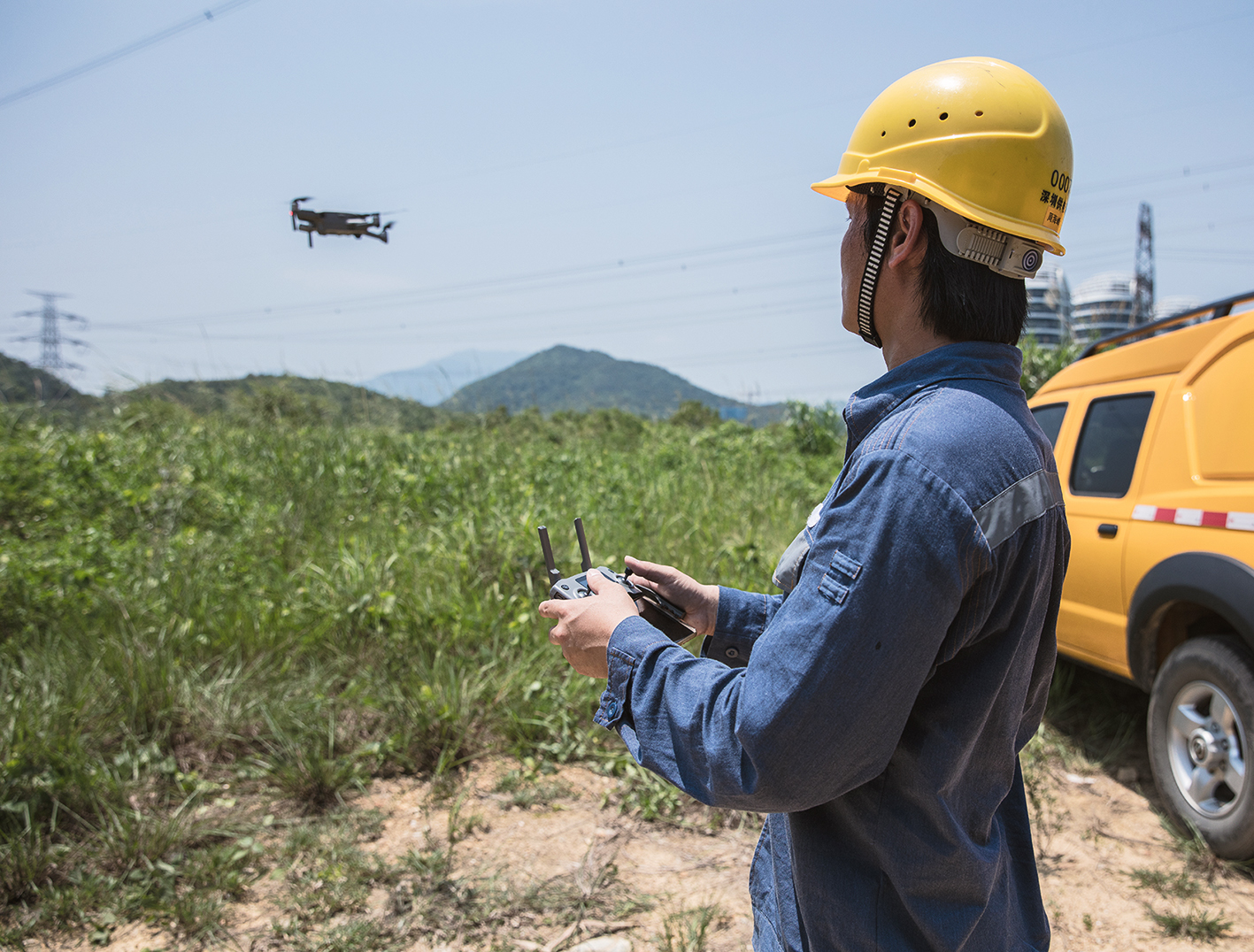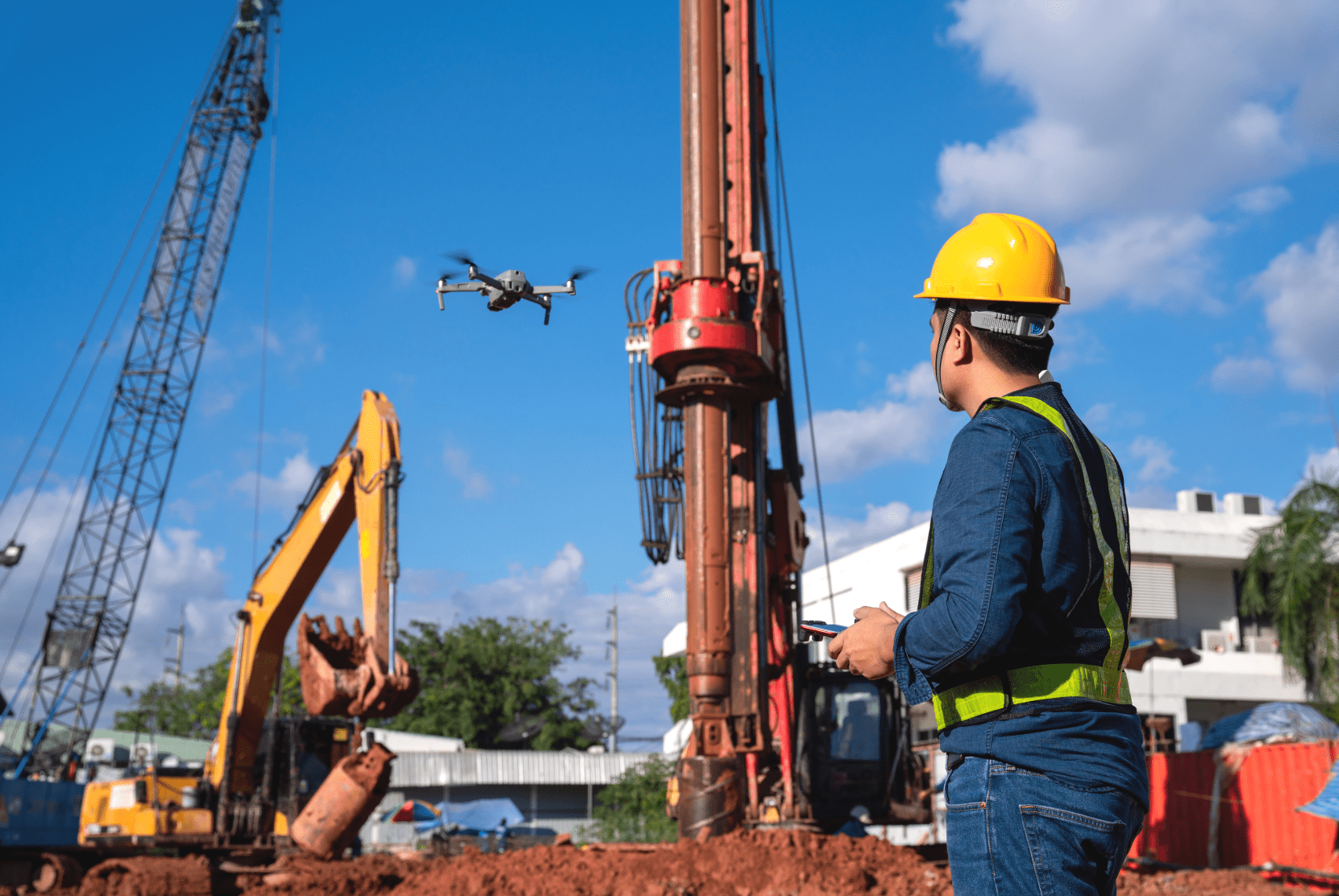Zum Jahreswechsel tritt die neue EU-Drohnenverordnung in Kraft. Wir informieren Sie hier ca. einmal die Woche bis zum Jahresende über die wesentlichen Änderungen. Im letzten Artikel ging es um das Thema „UAV-Klassen“.
Heute wollen wir auf die unterschiedlichen Betriebskategorien eingehen und uns anschauen, was es damit auf sich hat und was Sie beachten müssen.
Unter UAS-Betriebskategorien versteht man die Unterteilung von Flügen / Flugmanövern unbemannter Luftfahrzeuge anhand bestimmter (Risiko-)Kriterien. Diese Kriterien sind u. a.:
- technische Merkmale des UAS,
- Zweck des Fluges,
- Eigenschaften des Fluges (Höhe, Manöver),
- Sicherheit (für Unbeteiligte, sonstige Flugsysteme),
- das Betriebsumfeld,
- Sicht auf das UAS (VLOS = Visual Line of Sight, BVLOS = Beyond Visual Line of Sight) u. w.
Es gibt die Kategorien OFFEN, SPEZIELL und ZULASSUNGSPFLICHTIG. Sie finden in deutschen Texten womöglich auch die englischen Begriffe OPEN, SPECIFIC und CERTIFIED. Die meisten Drohnenflüge von Hobbypiloten, aber auch zu gewerblichen Zwecken, werden in der Kategorie OFFEN stattfinden. Das sind Flüge mit sehr geringem Risiko. Die anderen beiden Kategorien sind i. d. R. für Spezialanwendungen gedacht.
Betriebskategorie OFFEN
Die Betriebskategorie OFFEN ist in A1, A2 und A3 gegliedert. Hier gilt für alle drei Unterkategorien:
- Keine BVLOS-Flüge (keine Flüge außerhalb der Sichtweite des Piloten); allerdings ist es möglich einen Beobachter hinzuzuziehen, der ab dem Punkt, wo der Pilot die Drohne aus dem Blick verliert, die Sicht für den Piloten übernimmt.
- Maximale Flughöhe 120 m
- Es dürfen kein Material abgeworfen und keine gefährlichen Güter transportiert werden.
- Menschenansammlungen dürfen nicht überflogen werden.
Die Unterkategorie A1
Für den UAS-Betrieb in der A1-Kategorie muss der UAS-Betreiber vor der Aufnahme des Betriebs weder eine Betriebsgenehmigung einholen noch eine Betriebserklärung abgeben.
Drohnen zwischen 250g und 500 g dürfen keine unbeteiligten Personen überfliegen. Werden unerwarteterweise unbeteiligte Personen überflogen, muss der Fernpilot die Zeit, in der das unbemannte Luftfahrzeug diese Personen (jedoch keine Menschenansammlungen) überfliegt, so weit wie möglich verkürzen.
Sollte mit C1-Drohnen geflogen werden, ist der Überflug gar nicht erlaubt.
Der Fernpilot muss mit dem UAS-Benutzerhandbuch vertraut sein und, wenn mit Klasse C1 geflogen wird, einen Online-Lehrgang abgeschlossen und bestanden haben.
Die Unterkategorie A2
Das UAV darf nicht über unbeteiligte Personen fliegen.
Hier gilt die 1:1-Regel: Beträgt die Flughöhe beispielsweise 53 m, muss der Abstand mindestens 53 m betragen. Allerdings darf der horizontale Abstand nicht weniger als 30 m zu den nächsten unbeteiligten Personen betragen.
Eine Ausnahme gilt dann, wenn die Drohne einen „Low Speed“ Modus besitzt und dieser angeschaltet ist. In dem Fall muss der Mindestabstand nur noch 5 m betragen.
Der Fernpilot muss mit dem Benutzerhandbuch vertraut und Inhaber eines Fernpiloten-Zeugnisses sein.
Die Unterkategorie A3
Es muss in einem Gebiet geflogen werden, wo der Fernpilot nach vernünftigem Ermessen davon ausgehen kann, dass innerhalb des gesamten Flugbereichs keine unbeteiligte Person gefährdet wird.
Beim UAS-Betrieb muss ein horizontaler Sicherheitsabstand von mindestens 150 m zu Wohn-, Gewerbe-, Industrie- oder Erholungsgebieten gewahrt werden.
Der Fernpilot muss, wie in A1, mit dem UAS-Benutzerhandbuch vertraut sein und einen Online-Lehrgang abgeschlossen und bestanden haben.
Betriebskategorie SPEZIELL
Kann aus bestimmten Gründen eine oder mehrere der Vorschriften für die OFFENE Kategorie nicht eingehalten werden, greift die Kategorie SPEZIELL.
Hier wird entweder eine Betriebsgenehmigung benötigt oder es muss eine vorherige Erklärung abgegeben werden. Um eine Betriebsgenehmigung zu erhalten, muss eine Risikobewertung an die zuständige Behörde gegeben werden. Dies ist wesentlich umfangreicher als eine einfache Erklärung. Eine Erklärung reicht aus, wenn folgende Kriterien erfüllt werden können:
Der Pilot fliegt mit einem UAV mit einer maximalen charakteristischen Abmessung (z. B. Durchmesser) von
- bis zu 3 m in VLOS über einem kontrollierten Bereich am Boden, jedoch nicht über Menschenansammlungen,
- bis zu 1 m in VLOS, jedoch nicht über Menschenansammlungen,
- bis zu 1 m in BVLOS, über dünn besiedelten Gebieten,
- bis zu 3 m in BVLOS, über einem kontrollierten Bereich am Boden,
- unter 120 m Höhe und über einem kontrollierten Luftraum (also nicht Lufträume F oder G)
Wer ein LUC-Zeugnis (Light unmanned aircraft operator certificate) besitzt, benötigt keine Erklärung. (Mehr zum LUC-Zeugnis erklären wir im nächsten Blogartikel).
Können die Kriterien nicht erfüllt werden, muss eine Betriebsgenehmigung eingeholt werden. Diese vergibt die zuständige Behörde nach Prüfung der „Bewertung des Betriebsrisikos“, die der Betreiber einzureichen hat. Vorausgesetzt, die Behörde erachtet den Betrieb als hinreichend sicher. Falls nicht, ist die Behörde dazu verpflichtet, die Gründe für die Ablehnung anzugeben.
Die Risikobewertung muss unter anderem Folgendes beinhalten:
- Beschreibung des UAS-Betriebes
- Vorschläge zur Wahrung der Betriebssicherheit
- Identifizierung der Risiken am Boden und in der Luft für bspw. unbeteiligte Personen, Gegenstände, andere Flugobjekte, usw.
- Maßnahmen zur Risikominderung
- technische Merkmale des UAS
- Kompetenzen des Personals
- Luftraumklasse
Dies ist nur eine kleine Auswahl. Hier finden Sie die gesamte Liste: https://www.flynex.io/wp-content/uploads/2020/11/DURCHFUHRUNGSVERORDNUNG_Artikel11.pdf
Es muss nur dann keine Betriebsgenehmigung abgegeben werden, wenn:
- der UAS-Betreiber in Besitz eines LUC-Zeugnisses ist
- der Betrieb im Rahmen eines Flugmodell-Vereins oder einer -Vereinigungen durchgeführt wird.
Betriebsgenehmigungen können auch für sich wiederholende Flüge ausgehändigt werden. Beispielsweise, wenn mehrmals im Jahr dieselbe Stecke zu Inspektionszwecken beflogen werden soll.
Betriebskategorie ZULASSUNGPFLICHTIG
Als ZULASSUNSPFLICHTIG gelten nur bestimmte Einsätze. UAS müssen folgende Kriterien erfüllen, um in die Kategorie ZULASSUNGSPFLICHTIG zu fallen:
- die Abmessung des UAS beträgt mindestens 3 m und es ist so konstruiert, dass es über Menschenansammlungen betrieben werden kann;
- es ist für die Beförderung von Menschen konstruiert;
- es ist für den Transport gefährlicher Güter konstruiert und erfordert ein hohes Maß an Robustheit zur Minderung der Risiken für Dritte bei einem Unfall;
Zusätzlich gelten folgende Kriterien für den Flug selbst:
- Überflug von Menschenansammlungen
- Transport von Menschen
- Transport gefährlicher Güter, die bei Unfall ein hohes Risiko für Dritte darstellen
Außerdem kann die zuständige Behörde bei der Risikobewertung das Betriebsrisiko so einschätzen, dass der Betrieb in die Kategorie ZULASSUNGSPFLICHTIG fällt.
Unter welche Kategorie falle ich mit meiner jetzigen Drohne?
Sollten Sie eine Bestandsdrohne besitzen, dann greift zunächst eine Übergangslösung, die bis zum 01. Januar 2024 gilt. Als Bestandsdrohnen sind UAV definiert, die vor dem 01.01.2023 angeschafft wurden und keiner C-Klasse zugeordnet sind. Darüber hinaus gilt dann:
- UAS bis 500 g und Betrieb ohne Überflug über unbeteiligte Personen gehören der Kategorie OFFEN A1 an.
- UAS bis 2 kg und Betrieb mit horizontalem Abstand von mind. 50 m zu unbeteiligten Personen gehören der Kategorie OFFEN A2 an.
- UAS bis 25 kg und Betrieb mit horizontalem Abstand von mind. 150 m zu Wohn-, Freizeit- und Industriegebieten und ohne Überflug über unbeteiligte Personen gehören der Kategorie OFFEN A3 an.
Ab dem 01. Januar 2024 kann weiter in der Kategorie OFFEN A1 und OFFEN A3 betrieben werden. Und zwar:
- Unter OFFEN A1, wenn das UAS bis 250 g wiegt.
- Unter OFFEN A3, wenn das UAS bis 25 kg wiegt.
Im nächsten Blogartikel der Serie beantworten wir die Fragen rund um das Thema „Drohnenführerschein“.
Was wird in Zukunft ein Pilot für Qualifikationen / Kenntnisse nachweisen müssen? Welche Prüfungen müssen abgelegt werden und gibt es unterschiedliche Typen von Zulassungen?
Im nächsten Artikel erfahren Sie mehr!
Bleiben Sie gesund,
Ihr FlyNex Team
Dieser Artikel ist Teil einer Serie über Neuerungen und Veränderungen durch die EU-Drohnenverordnung. Unter anderem erklären wir in den Artikeln bis Ende des Jahres, wie sich die neuen Betriebskategorien unterteilen, welche Anforderungen Drohnen und Piloten zu welchen Stichtagen erfüllen müssen und was sich im Luftraum für Unbemannte Fluggeräte ändert. Wir freuen uns über Feedback, Ergänzungen und Vorschläge, um allen Leserinnen und Lesern verständliche und aktuelle Informationen bereitzustellen.
Hier finden Sie weitere Blogartikel zum Thema EU-Drohnenverordnung
